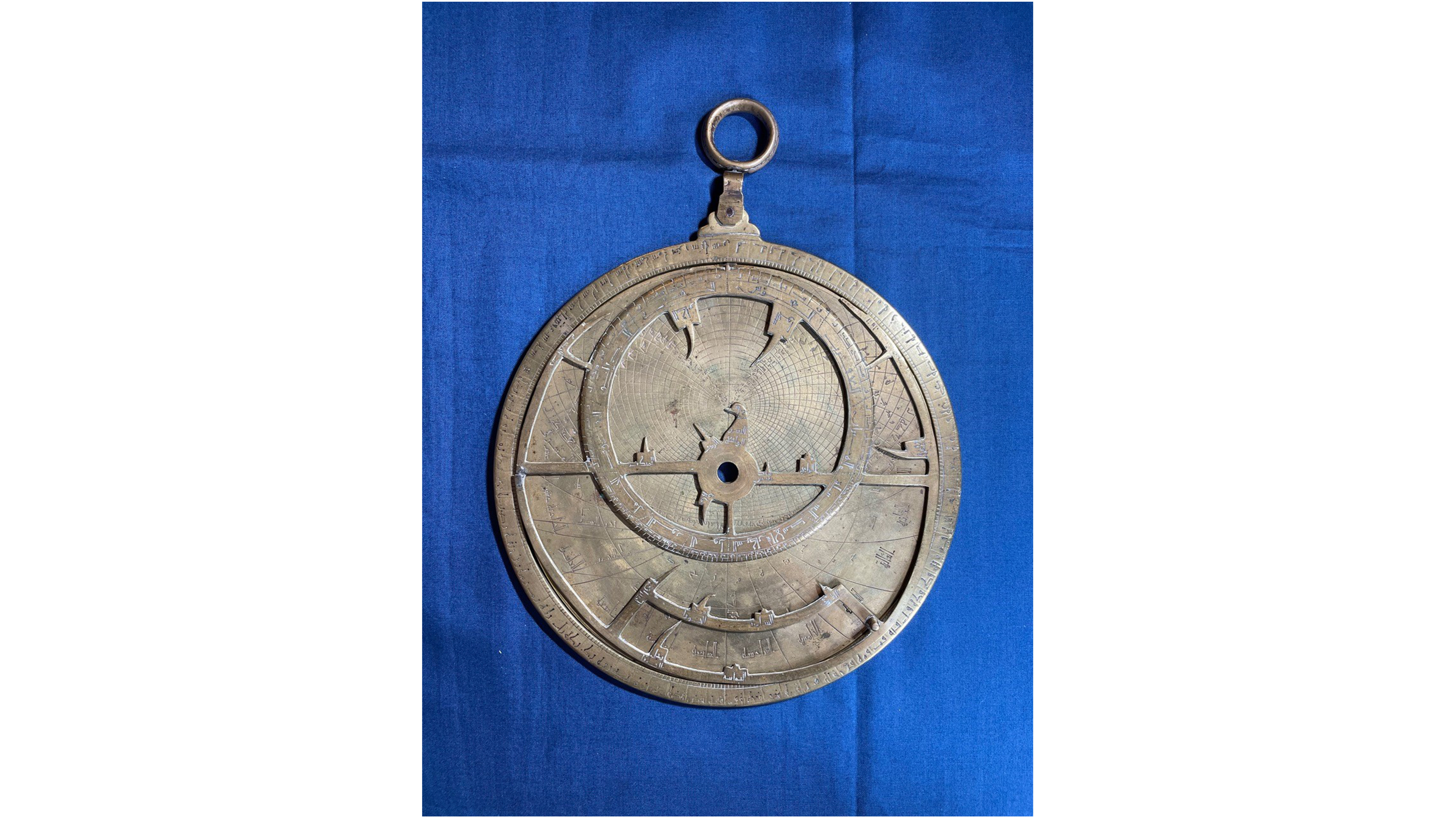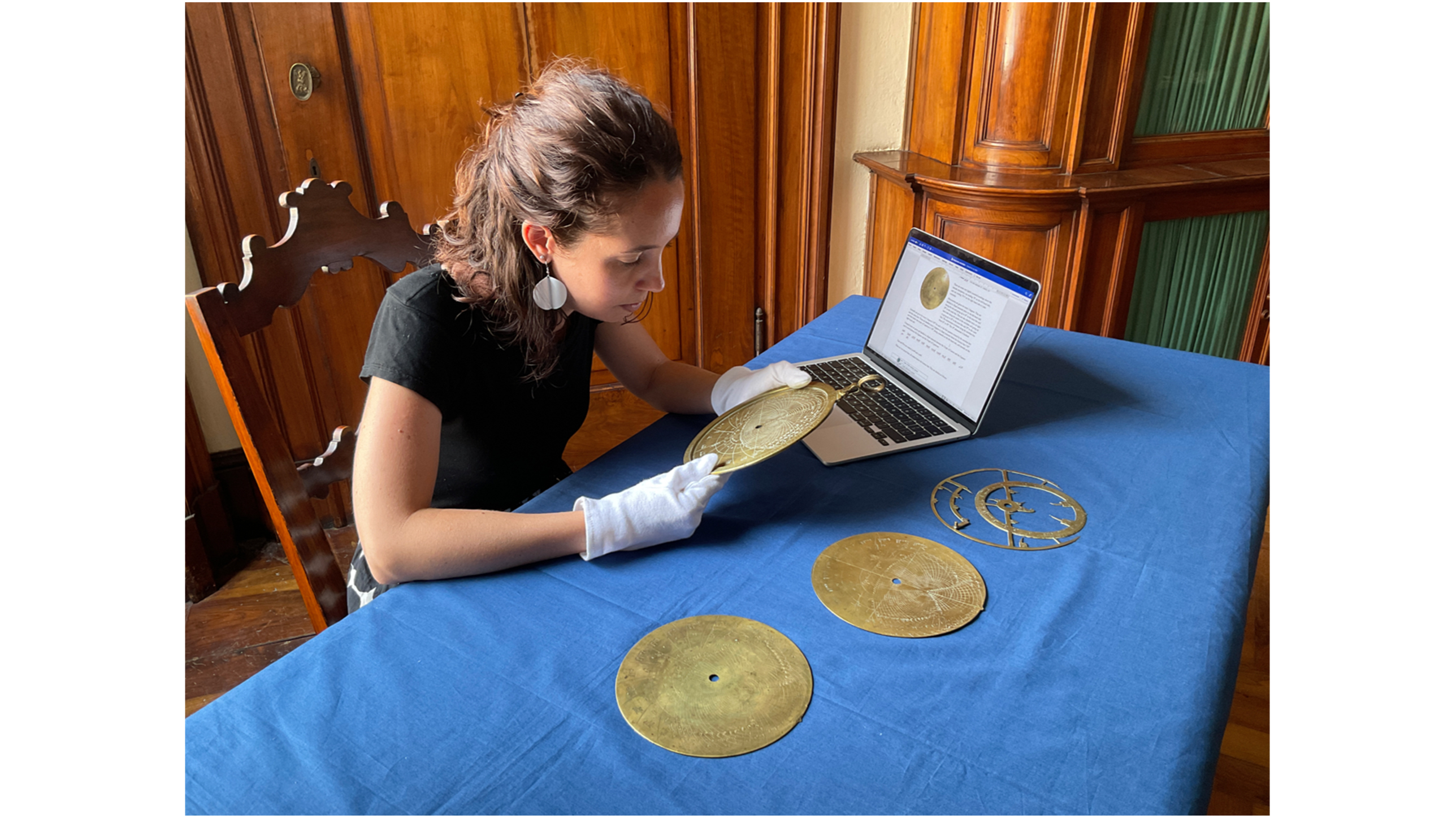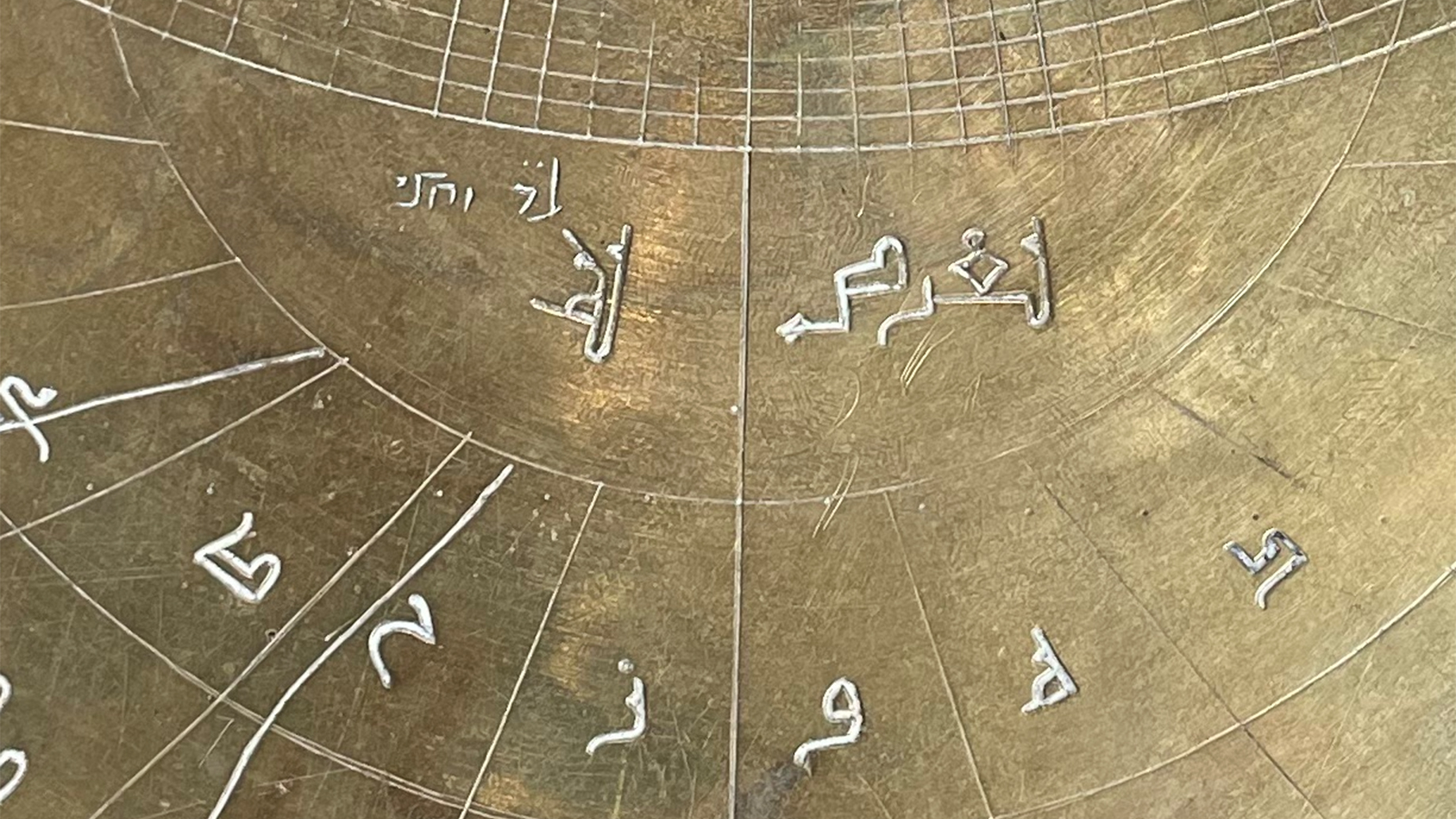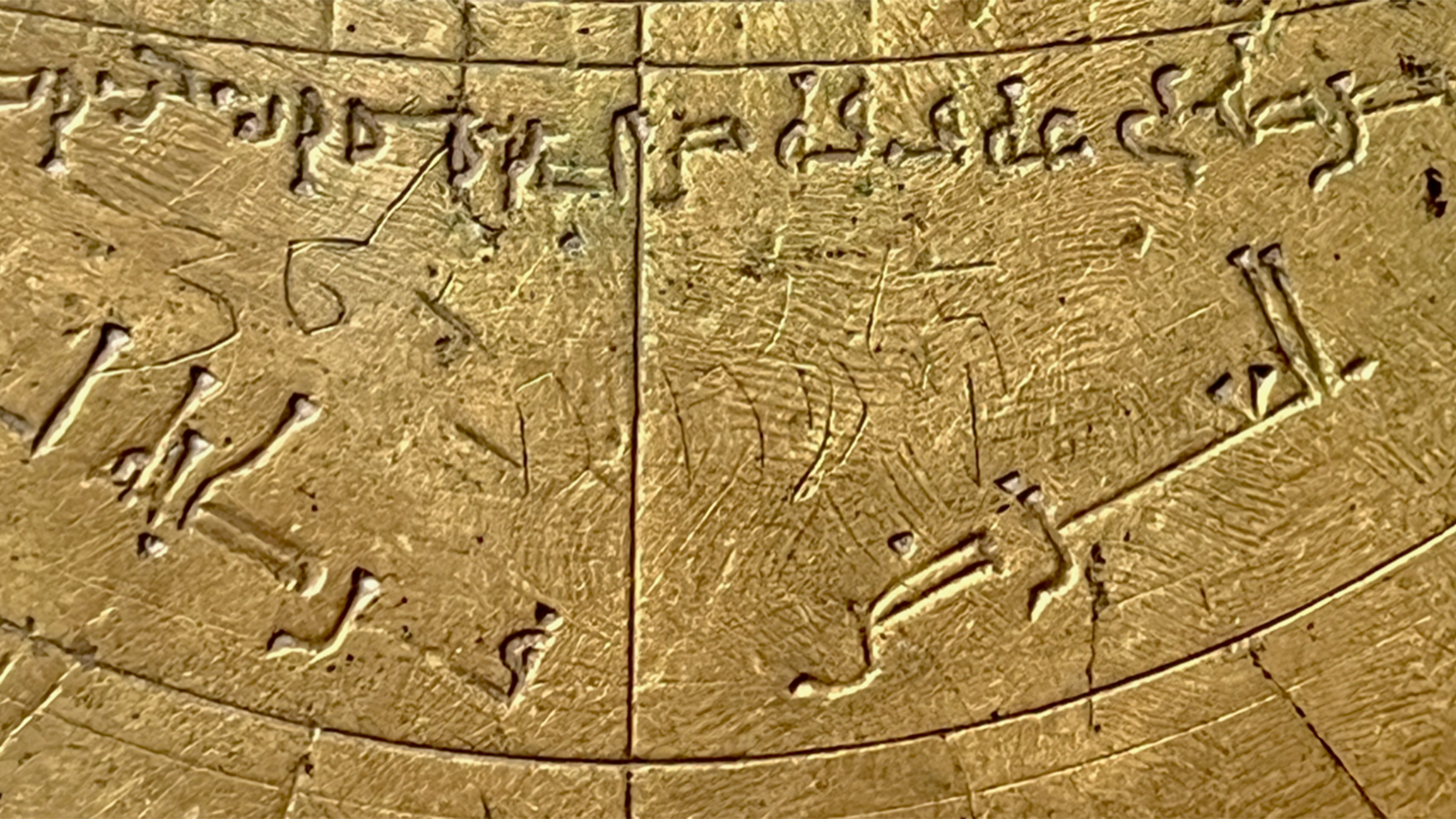
An 11th-century astrolabe — a device used for accurately calculating the date and time based on star positions — found in a museum in Verona, Italy, is clear evidence for scientific exchange and cooperation between Muslim, Jewish and Christian people, a new study finds.
The astrolabe stands out because, having been built by Muslim craftsmen, it subsequently passed through the hands of Jewish and Christian users, who translated and modified the hand-held device over the centuries. Such a widely shared astrolabe dating from almost a thousand years ago is an extremely rare find.
The bronze astrolabe languished in the archives of Verona's Fondazione Museo Miniscalchi-Erizzo for decades, its true worth unrealized, until the museum's curator, Giovanna Residori, became curious and caught the attention of Federica Gigante, a historian at the University of Cambridge who specializes in material and intellectual exchanges between Islamic people and Europe.
Related: What did ancient humans know about astronomy?

"The current curator thought it was an intriguing object and wanted to know more about it," Gigante told Space.com. "Just by chance I saw it on the museum website, so it was a happy coincidence."
Upon inspecting the astrolabe, Gigante was astonished to find just how complex the history of this particular device was.
Astrolabes were invented by the ancient Greeks, but no astrolabes survive from that time. Rather, the earliest examples are from the late 8th century and were constructed by Arab astronomers, who led the world at the time in terms of their scientific skills.
Astrolabes are constructed from a disk, around the rim of which either the time or degrees of angular separation are marked. Pinned to this disk are one or more circular plates, each plate for a specific latitude, and on top of that is another plate called a rete (pronounced "ree-tee"), on which there is a chart depicting the brightest stars in the sky. The idea is to rotate the rete so that the position of the stars matches what's in the sky, and then to use the hour scale around the rim to determine the time.
Astrolabes were designed by Muslim craftsmen specifically with religious use in mind.
"Every mosque would have had one," said Gigante. "That makes perfect sense, because the chief function of an astrolabe is to tell the time, and that's one thing a muezzin does from a minaret, which is to chant the hour of prayer."

There are a dozen or so examples of astrolabes of Arab construction in museum collections worldwide, but what makes the Verona astrolabe stand out is that it also features inscriptions in Hebrew and in a western language used in Christian countries at the time, in this case probably Italy.
Gigante says that the astrolabe was probably constructed in Spain, in the late 11th century. She can't be sure exactly when, though. "The star positions are not so accurate that I could date it from them," she said.
Earth wobbles on its axis, a motion called precession that sees the position of the stars relative to the north pole shift in a cycle that lasts 26,000 years. Over the thousand years since the astrolabe was constructed, the stars have shifted relative to a fixed background by about 14 degrees. But Gigante found that trying to rewind the sky to match the positions on the astrolabe in order to determine when the astrolabe was made didn't work, because the star positions on the astrolabe are not as accurate as modern measurements.
Instead, Gigante scoured ancient tables of stellar coordinates that astrolabes of this era would have been derived from. She focused on those from Al-Andalus, which was a Muslim-ruled area of what is now Spain. Both Muslim and Jewish people lived side by side in Al-Andalus, and all spoke Arabic. The Verona astrolabe features an inscription in Arabic, reading "for Isḥāq [...]/the work of Yūnus." In English, those names are Isaac and Jonah, and are likely Jewish monikers written in Arabic — hence Gigante's focus on Al-Andalus.

"If we think about what Spain was like in the 11th century, there were many different observatories where attempts were made at drawing up charts of star coordinates and planet positions, and these were working groups of scientists that always comprised Jews and Muslims working alongside each other," says Gigante.
Although she could not identify a specific table of stellar coordinates that informed the Verona astrolabe, she did find one dating from Al-Andalus in 1068 that was close. This is supported by more inscriptions on one of the reversible plates, which state that they are for the latitudes of Cordoba and Toledo, both of which are cities in the region.
However, at some point the astrolabe appears to have changed hands. A second plate was added with an Arabic inscription saying it was for use in North Africa, somewhere in present-day Egypt or Morocco.
Related: Mariner's astrolabe from 1503 shipwreck is world's oldest
After this, the astrolabe received further modifications. Arabic markings were crossed out and translated into Hebrew, the language of Jewish people in the rest of the world. After that, faint numerals written in a western language were also scratched onto the disk, before the astrolabe ultimately ended up in the hands of Ludovico Moscardo, a 17th-century nobleman in Verona. It became part of the collection in his Moscardo Museum, which in 1964 was absorbed into the Fondazione Museo Miniscalchi-Erizzo, before finally coming to Gigante's attention.
Astrolabes were the smart phones of their time. "Every educated person, especially those working on astronomical or astrological matters, would have had one," said Gigante.
Half of these users, such as the muezzins in their minarets, would have used them to make astronomical readings for religious regions. The other half would have employed them for astrological purposes. Back in the 11th century, when our understanding of the heavens was limited, astronomy and astrology were considered the same thing.
"When the astrolabe got into Jewish and Christian hands, I expect it was used for more astrological purposes than religious ones, though monks used astrolabes as well for prayer times," said Gigante.
Astrolabes with inscriptions in Hebrew are exceptionally rare; Gigante knows of one in the British Museum in London but no others, although many were likely lost to the ravages of time. However, their rarity emphasizes how most astrolabes from this era were of Muslim origin and used exclusively by Muslims. The Verona astrolabe is therefore of historical importance because its origins are equally Islamic, Jewish and Christian.
It is a timely reminder, given current tragic events in the Middle East, that in the past different peoples could co-exist and share knowledge.
Gigante discusses her findings in a paper published on March 1 in the journal Nuncius.







